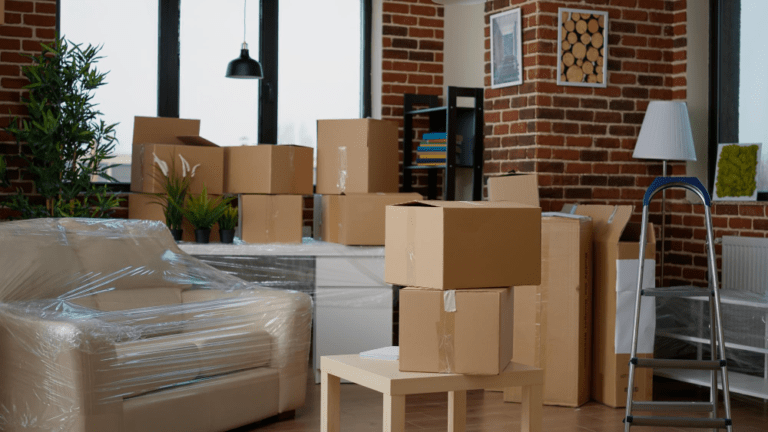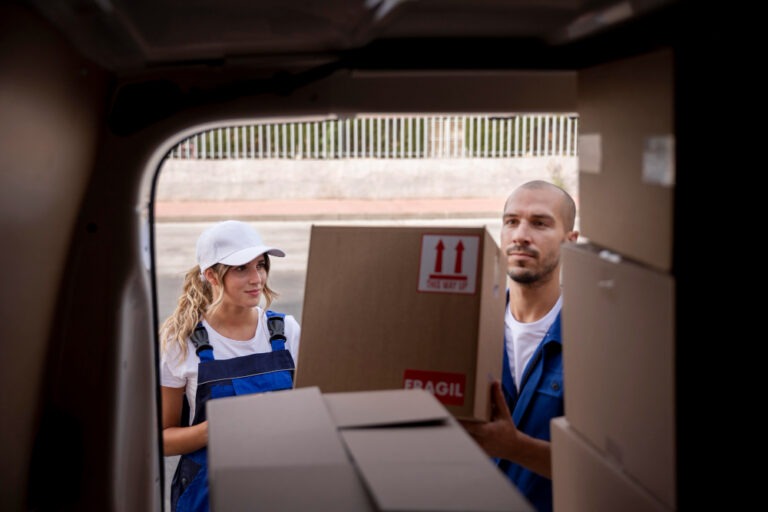Moving can be a daunting task, especially when it comes to packing the heart of your home – the kitchen. With numerous fragile items, bulky appliances, and tiny utensils, the kitchen often poses a unique challenge.
But what if you had a guide that could simplify this process for you? At “Friends Moving,” we’ve been assisting families and businesses with their moving needs for over 15 years. Our experience has taught us the intricacies of packing every corner of a home, especially the kitchen.
In this comprehensive guide, we’ll share our expert insights on “how to pack a kitchen for moving.” Whether you’re moving across the street or across the country, these tips will ensure your kitchen items reach their new destination in perfect condition. So, let’s dive in and help you get started on this moving journey with confidence!
Understanding the Complexity of a Kitchen
The kitchen, often referred to as the heart of the home, is a unique blend of items that range from delicate glassware to bulky appliances. Packing a kitchen requires a keen understanding of its intricacies to ensure each item is transported safely. Let’s delve into the complexities of a kitchen and how to navigate them during a move.
- Fragile Items: These include glassware, china, and ceramics. They need extra padding and careful handling.
- Bulky Items: Think of your microwave, mixer, and toaster oven. These require sturdy boxes and strategic placement in the moving truck.
- Small Items: Utensils, cutlery, and even spice jars fall into this category. They can easily be misplaced if not packed properly.
- Categorization: Before you start packing, categorize items based on their type. This simplifies the packing process and ensures items get the right protection.
- Safety First: Always prioritize the safety of fragile items. Use bubble wrap, towels, or clothes for added cushioning.
- Efficiency: Packing similar items together can make unpacking easier. For instance, pack all pots and pans in one box.
- Declutter: Moving is a great time to declutter. Before packing, decide what you want to keep, donate, or discard.
Read More: How to Handle Last-Minute Moves in Vero Beach
Gathering Essential Packing Supplies
Just as a chef needs the right tools to create a culinary masterpiece, you need the right packing supplies to ensure a smooth move. The right materials can make the difference between a broken plate and one that arrives in pristine condition. Here’s a breakdown of the essential packing supplies for your kitchen move.
- Varied Box Sizes: Not all kitchen items are created equal. Have a mix of small, medium, and large boxes to cater to different items.
- Bubble Wrap: This is crucial for wrapping fragile items. It provides the cushioning needed to prevent breakages.
- Packing Paper: Ideal for wrapping dishes, glasses, and other delicate items. It prevents scratches and adds an extra layer of protection.
- Tapes: Strong packing tape ensures boxes are sealed well, preventing any accidental openings during transit.
- Labeling Materials: Permanent markers and labels help in identifying box contents, making unpacking systematic and efficient.
- Scissors & Box Cutters: These tools are essential for opening and closing boxes, as well as cutting wrapping materials to size.
- Packing Peanuts: These fill empty spaces in boxes, preventing items from moving around and potentially breaking.
Step-by-Step Guide to Packing Fragile Items
A systematic approach can make the difference between a cherished item and making it to your new home intact or in pieces. Let’s walk through a detailed guide on packing these delicate treasures.
1. Inventory and Prioritize
Taking stock of what you have is the first step in the packing process. By creating an inventory, you not only have a clear picture of the items you need to pack but can also gauge the amount of packing material required.
Prioritizing items based on their fragility ensures that you give extra attention to those that need it the most. This step is about being proactive and setting the stage for a smooth packing experience.
2. Use Specialized Boxes
The right box can make all the difference. Dish pack boxes, for instance, are sturdier and come equipped with compartments, making them perfect for dishes and glassware. These compartments prevent items from knocking against each other during transit, reducing the risk of breakage.
3. Layering is Key
Think of packing like layering for winter. You start with the basics and then add on. In the context of packing, the first layer of protection is the cushioning at the bottom of the box. This acts as a shock absorber. As you stack items, ensure each one is wrapped individually, offering multiple layers of protection against potential impacts.
4. Handle Glassware With Extra Care
Glassware is particularly vulnerable due to its delicate nature. Filling glasses with packing paper provides internal support while wrapping them in bubble wrap offers external cushioning. This dual protection strategy minimizes the risk of breakage from external pressures or sudden jolts.
5. Electronic Appliances
Electronics are not just fragile; they’re often expensive. Packing them correctly is crucial to avoid damage and potential data loss. Original boxes are designed to house their respective items perfectly, offering the best protection. In the absence of these, choosing a snug-fitting box and using padding materials to fill gaps ensures the item remains stationary during the move.
6. Label Everything
Proper labeling serves a dual purpose. Firstly, it acts as a clear indicator to movers or anyone handling the box that it contains fragile items. This prompts them to handle the box with care. Secondly, indicating the correct orientation of the box ensures that items inside aren’t subjected to undue pressure or placed in a position where they could be damaged.
Packing Bulky Kitchen Appliances
These appliances not only represent a significant financial investment but are also essential for the day-to-day functioning of your home.
Here are some concise tips to ensure their safety during a move.
- Defrost and Dry: For refrigerators, ensure they’re defrosted at least 24 hours before the move and thoroughly dried to prevent mold.
- Secure Doors: Use strong tape or moving straps to keep appliance doors shut during transit.
- Disconnect and Label: Unplug and secure any cords, labeling them for easy setup in your new home.
- Remove Loose Parts: Take out shelves, trays, or any removable parts and pack them separately.
- Use Appliance Dollies: These specialized moving tools provide support and make transporting bulky items safer and easier.
- Protect Exteriors: Wrap appliances in moving blankets or bubble wrap to prevent scratches and dents.
- Seek Professional Help: For particularly heavy or valuable appliances, consider hiring professionals to ensure safe disconnection and transport.
Read More: How to organize a stress-free move in Vero Beach
Dealing With Small Kitchen Items
When it comes to moving, small kitchen items like cutlery and utensils often pose a unique challenge. While they might not be as bulky as major appliances, their sheer number and variety can be overwhelming. It’s essential to organize and pack them systematically.
Start by sorting cutlery into categories: forks, knives, spoons, and specialty utensils. Once sorted, bundle them together using rubber bands or small boxes, ensuring sharp edges are safely wrapped to prevent injury during unpacking.
On the other hand, spices, oils, and other pantry items require a different approach. First, check the expiration dates and discard any outdated or nearly empty containers. For the remaining items, ensure they are sealed tightly to prevent leaks.
Using small boxes or plastic bins can be beneficial for these items. Place heavier items at the bottom and cushion them with bubble wrap or newspaper. Labeling each box with its contents can make the unpacking process smoother and more efficient in your new kitchen.
Special Tips for Packing Food Items
Packing food items for a move is a delicate task that requires careful consideration. Unlike other household items, food has a limited shelf life and can be affected by various factors during transit.
The challenge lies in determining what to take with you and how to pack it to ensure it remains fresh and safe for consumption. Here are some specialized tips to guide you through this process.
- Expiration Check: Before packing, check the expiration dates on all items. Discard anything that’s expired or close to its expiration date.
- Seal Tightly: Ensure all containers, especially those with liquids like oils or sauces, are sealed tightly to prevent leaks.
- Limit Perishables: Only pack perishables if the move is short. For longer moves, it’s best to consume or give them away before moving.
- Use Coolers: For perishables you decide to take, pack them in coolers with ice packs to keep them fresh during transit.
- Avoid Overpacking: Don’t stuff boxes with food items. Leaving some space can prevent crushing and potential spillage.
- Label Clearly: Mark boxes containing food items with “Perishable” or “Food” to ensure they are easily identifiable and can be unpacked first.
- Consider Donating: If you have non-perishable food items you don’t want to move, consider donating them to a local food bank or shelter.
Labeling and Organizing Packed Boxes
As the adage goes, “A place for everything and everything in its place.” This couldn’t be truer when it comes to moving. Proper labeling and organization of packed boxes can be the difference between a chaotic unpacking experience and a smooth transition into your new space.
- Clarity is Key: Clearly label each box with its contents and the room it belongs to.
- Use Color Codes: Assign a color for each room and use colored stickers or markers for easy identification.
- Priority Marking: Label boxes with essentials as “Open First” to easily access them upon arrival.
- Handle with Care: Mark fragile items with “FRAGILE” and indicate which side is up.
- Numbering System: Number each box and maintain a list detailing its contents for easy reference.
- Inventory List: Keep a detailed inventory of all packed items. This helps in ensuring nothing gets lost in transit.
Why Consider Hiring Professionals like “Friends Moving”
Moving can be both an exciting and daunting task. While the idea of a new place is exhilarating, the logistics of moving can be overwhelming. This is where professionals like “Friends Moving” come into play, turning a potentially stressful experience into a seamless transition.
1. Expertise and Experience
“Friends Moving” has been in the moving business for over 15 years. This longevity speaks volumes about their expertise. They understand the intricacies of moving, from packing fragile items to transporting bulky furniture. Their vast experience ensures that your belongings are handled with utmost care and professionalism.
2. Efficiency and Speed
Professional movers are trained to pack and transport items quickly without compromising on safety. Their efficiency means your move will be completed in a fraction of the time it might take if you were to do it yourself.
3. Safety and Insurance
One of the significant advantages of hiring professionals is the assurance of safety. “Friends Moving” takes every precaution to ensure your belongings are safe. Moreover, they offer insurance options, providing an added layer of protection for your items.
4. Equipment and Tools
Moving requires specific tools and equipment, from dollies to specialized moving trucks. “Friends Moving” comes equipped with all the necessary tools, ensuring that your items are moved safely and efficiently.
5. Stress Reduction
Moving can be stressful. By hiring professionals, you’re delegating the hard work to experts, allowing you to focus on other aspects of the move. Knowing that a reliable team is handling your belongings can significantly reduce moving-related stress.
6. Cost-Effective in the Long Run
While hiring professionals might seem like an added expense, it can be cost-effective in the long run. The risk of damage to your belongings is significantly reduced, and the time you save can be invaluable. Additionally, “Friends Moving” offers competitive rates, ensuring you get value for your money.
Conclusion
As we wrap up this comprehensive guide on moving, it’s essential to remember that the packing process, while intricate, is a journey towards a fresh start in a new space. Every item, whether bulky or small, fragile or sturdy, has its place and importance.
By following the outlined steps and tips, you can ensure that each belonging is packed securely and efficiently. And remember, moving isn’t just about transporting items from one place to another; it’s about transitioning memories, emotions, and a part of yourself.
If the process ever feels overwhelming, contact professionals like Friends Moving, who are ready to assist and make your move as seamless as possible.
FAQs
Ideally, start packing non-essential items about 3-4 weeks before your move. This gives you ample time to organize and reduces last-minute stress.
Consider donating usable items to local charities or shelters. Alternatively, you can organize a garage sale or recycle items that are no longer functional.
Use ample cushioning materials like bubble wrap, packing paper, and peanuts. Ensure they are packed snugly in boxes, and clearly label these boxes as “FRAGILE.”
Non-perishable food items can be packed. However, for perishables, it’s best to consume or give them away, especially if the move is long.
Disassembling large furniture can make transportation easier and reduce the risk of damage. However, ensure you keep all parts and assembly instructions together.






